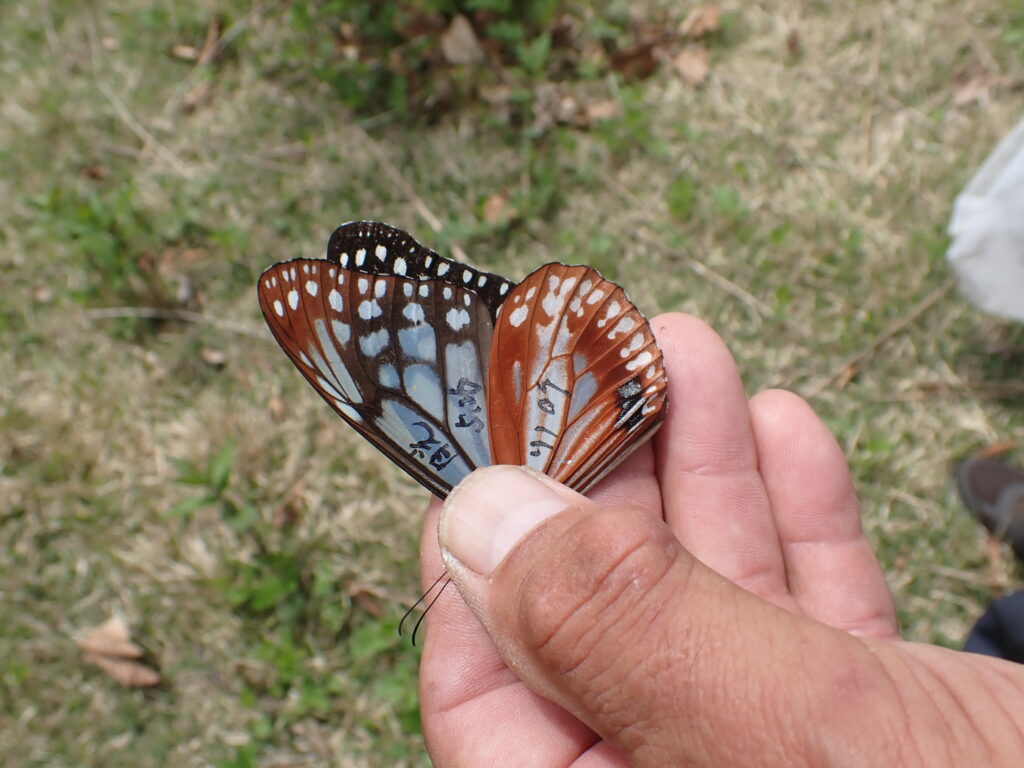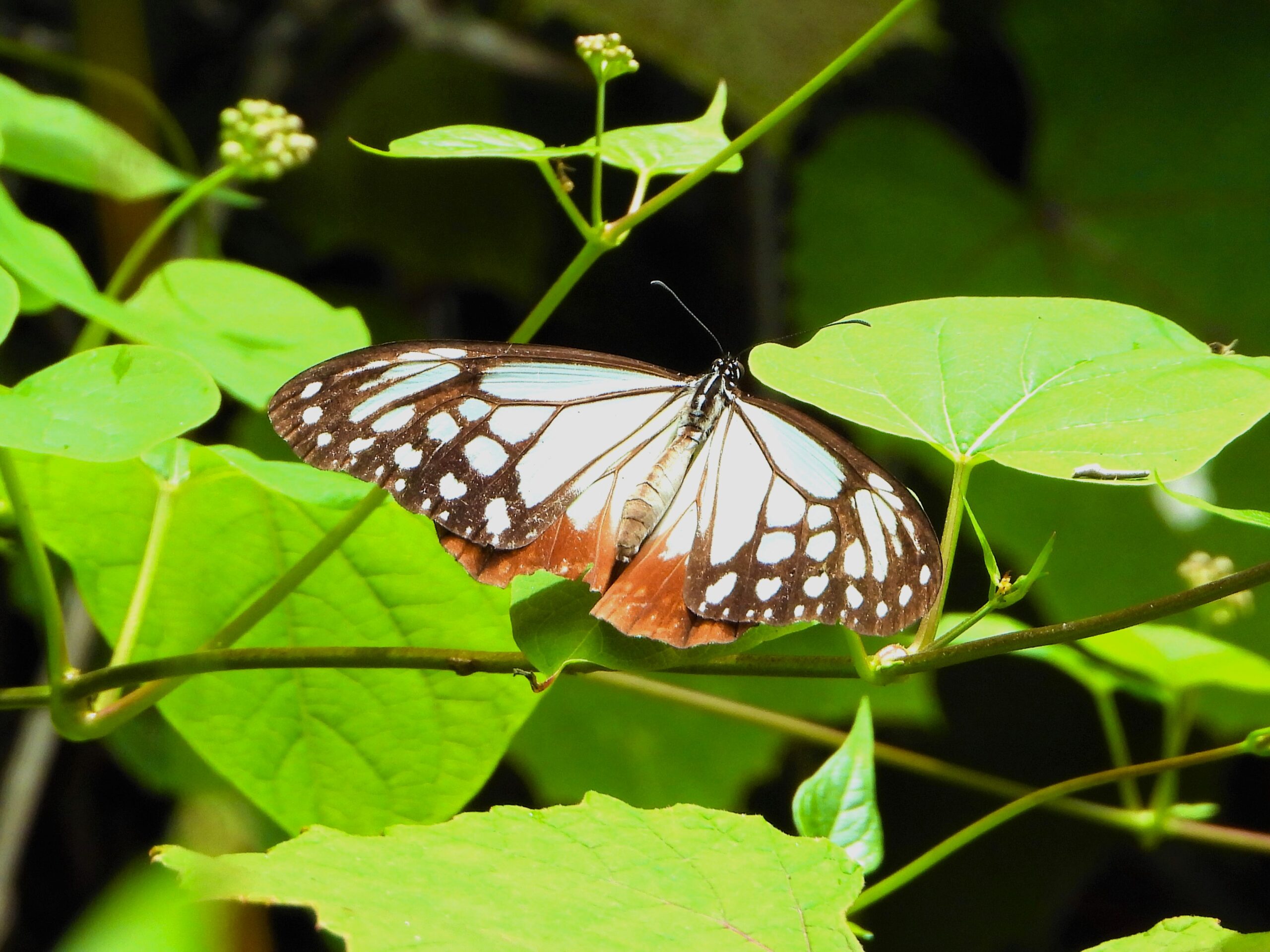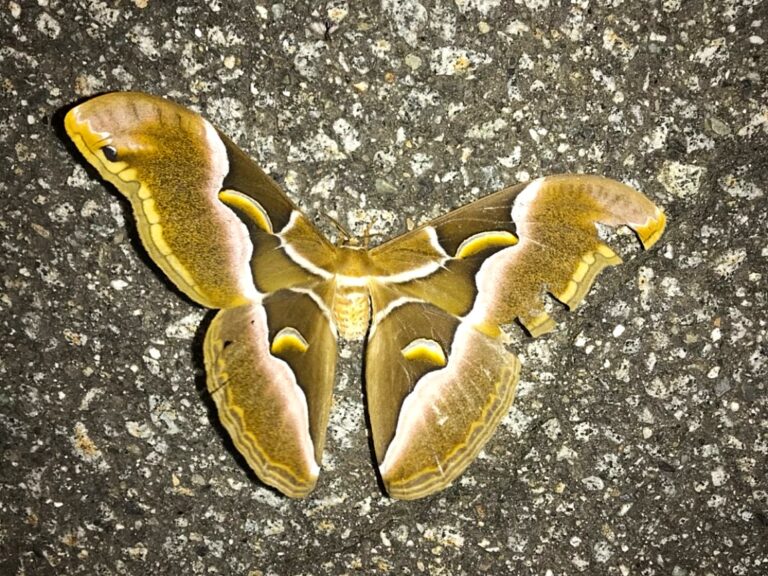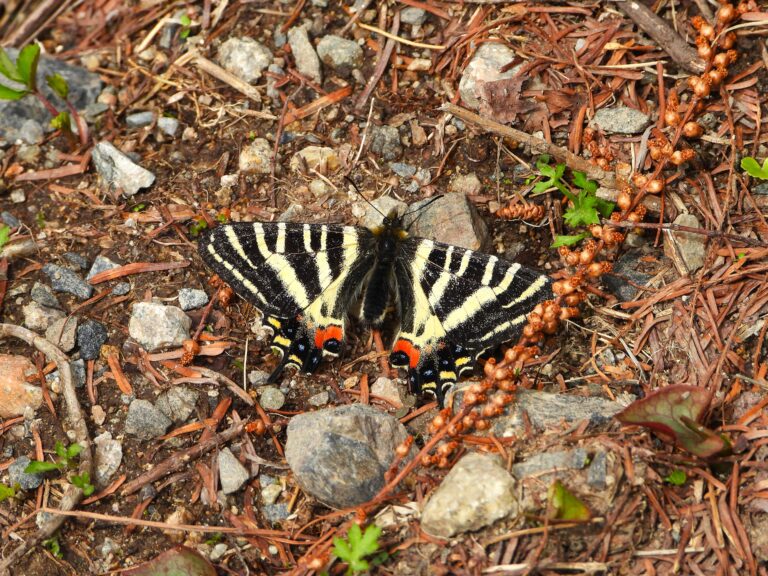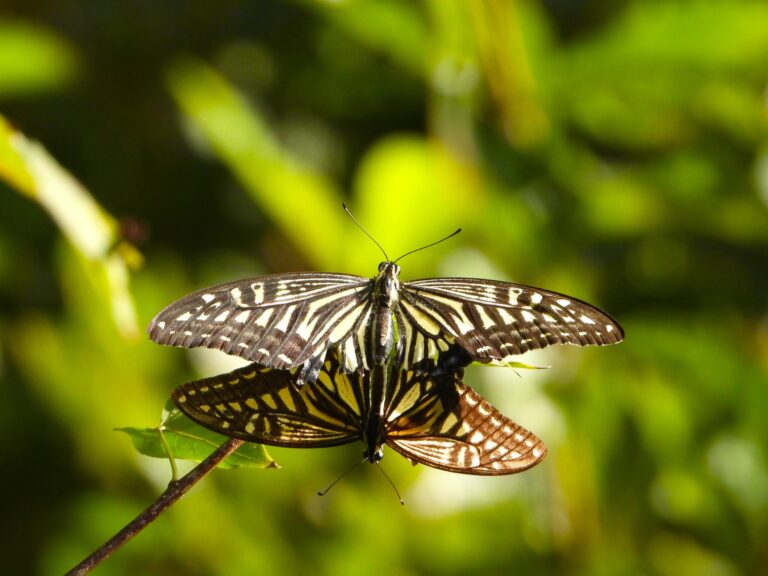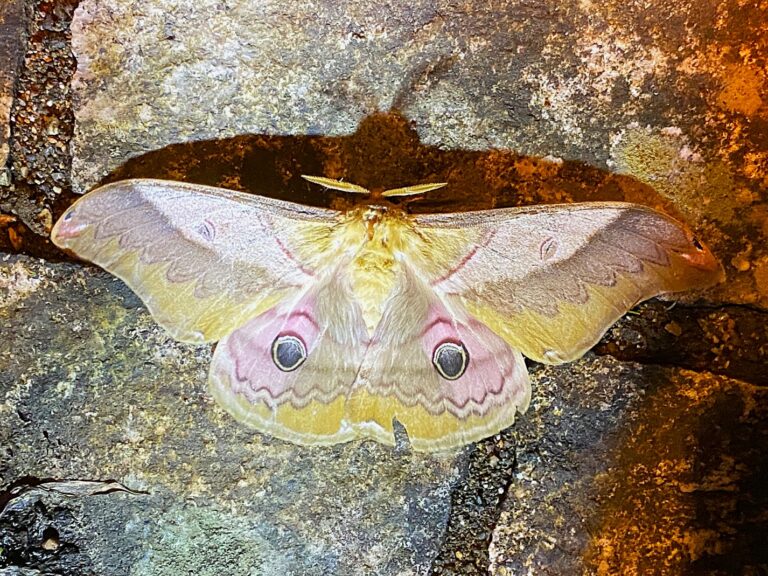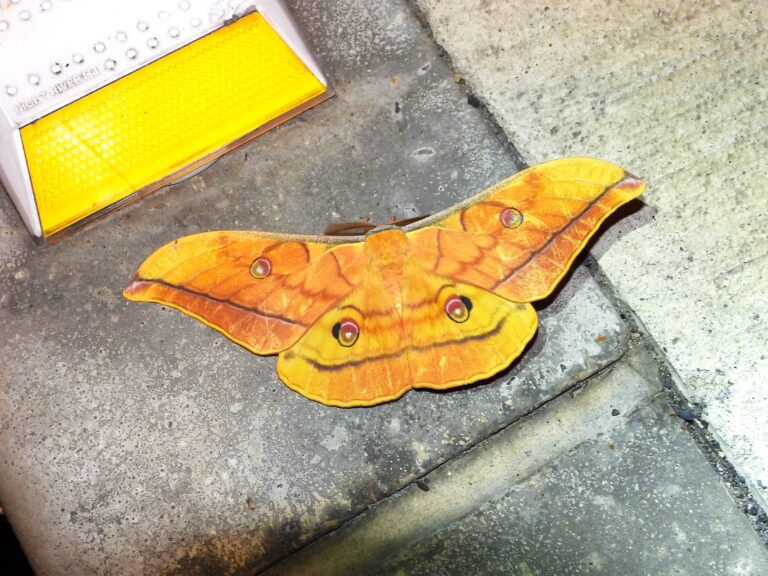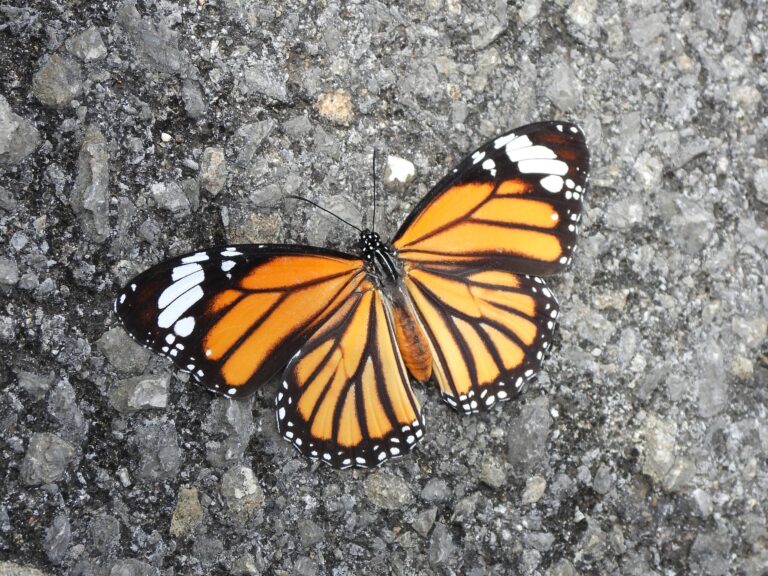Chestnut Tiger (Parantica sita) – Wildlife of Japan
Introduction
The Chestnut Tiger (Parantica sita), known in Japanese as Asagimadara, is one of Japan’s most celebrated butterflies. Famous for its astonishing long-distance migrations across East Asia, this species can travel well over 2,000 kilometers. Its graceful flight and mysterious journeys have made it a symbol of nature’s resilience and beauty.
Appearance
A large danaine butterfly with a wingspan of 6–8 cm, the Chestnut Tiger has pale bluish-white wings with bold black veins and chestnut-colored patches near the hindwings. Its dark body is dotted with white spots. When gliding in sunlight, the pale blue shimmer of its wings is striking and easily recognizable.
Habitat
In Japan it occurs from Hokkaidō to Okinawa, frequenting forest edges, bright woodlands, and montane meadows. In summer, it can also be seen in highland areas such as Kirigamine and Norikura. During autumn, it gathers in large numbers at nectar-rich flowers like Fujibakama and Eupatorium, where it fuels up before continuing its southward journey.
Behavior
A strong, energy-efficient flyer, the Chestnut Tiger undertakes seasonal migrations that can exceed 2,000 kilometers. In Japan, populations swell and move south from late September to October, with documented journeys reaching Taiwan, Hong Kong, and even the Philippines. Research has shown that they sometimes ride air currents at high altitudes to conserve energy. On calm days they forage from late morning through the afternoon, and in the evening they roost singly on shrubs and grasses.
Diet
Adults feed on nectar from a variety of wildflowers, especially those containing pyrrolizidine alkaloids, which provide chemical defense against predators. Fujibakama is particularly important during migration. Larvae feed on milkweed relatives such as Marsdenia and Cynanchum, absorbing defensive compounds that make them unpalatable to birds.
Reproduction
Females lay single eggs on the undersides of host-plant leaves. Caterpillars pass through several instars before pupating into a jade-green chrysalis speckled with gold. Breeding is more common in the warmer southern regions, while northern populations contribute to long-distance migrants.
Conservation
The species is not endangered, but its survival depends on the availability of nectar plants and host vines along migration routes. Loss of Fujibakama and other nectar sources reduces vital stopover sites. Citizen science projects, particularly mark-and-recapture surveys, play an important role in mapping migration routes and raising conservation awareness.
Author’s Impression
I once encountered a research group conducting a tagging survey. They wrote a small identification code on the butterfly’s wing and released it back into the sky. Later, if it was recaptured in another country, researchers could measure how far it had traveled. Knowing that some of these butterflies journey more than 2,000 kilometers made the moment unforgettable—watching such a delicate creature become part of a vast scientific story was awe-inspiring.
